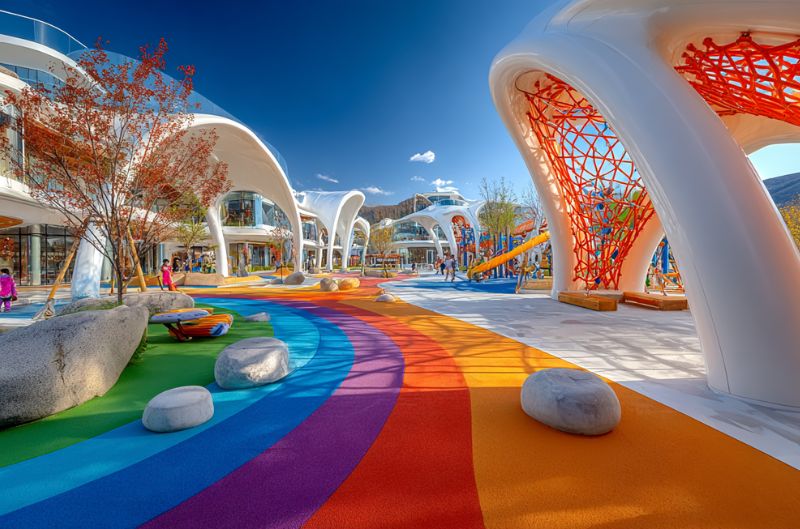
How to Make Playgrounds Safer Without Sacrificing Fun
Author: Austin Stanfel
Creating a playground that is both safe and exciting is a challenge faced by parents, educators, city planners, and park designers around the world. While safety must never be compromised, it is crucial to ensure that playgrounds remain places of adventure, discovery, and joy. Here is how you can strike that vital balance—making playgrounds safer while keeping the fun alive.
Why Playground Safety Matters
Each year, more than 200,000 children in the U.S. alone visit emergency rooms due to playground-related injuries. The vast majority of these injuries result from falls, but other risks include head entrapment, collisions, and contact with sharp or broken equipment. However, overly restricting playgrounds saps them of the very wonder that makes kids want to play and learn. Striking the right balance improves both safety and play value.
Key Safety Tips That Do not Limit Play
1. Use Safe, High-Quality Surfacing
The right ground surface is the single most effective way to reduce injury:
- Avoid asphalt, concrete, packed earth, or grass, as these absorb little impact.
- Use shock-absorbing materials like wood chips, mulch, sand, pea gravel, rubber mats, or synthetic turf.
- Surfacing should be at least 12 inches deep and extend at least 6 feet in every direction around equipment—or farther for swings and tall structures.
- Regularly inspect and maintain surfaces to avoid dangerous wear or compaction.
2. Age-Appropriate Equipment and Zones
Playgrounds should have separate areas and equipment for different age groups:
- Create zones for toddlers (2–5 years) and older children (5–12 years).
- Offers smaller slides, swings with back support, and lower platforms for younger kids; older children can use climbing nets, taller slides, and complex structures.
- Age separation reduces risk and ensures every child finds fun, appropriately challenging play.
3. Supervision and Sightlines
Active adult supervision can prevent most injuries:
- Design playgrounds with minimal visual obstructions to maintain clear sightlines for supervisors.
- Place benches or seating for caregivers in positions allowing a full view of the play areas.
- Teach children about safe behavior (no pushing, roughhousing, or crowding at exits).
4. Equipment Layout and Spacing
Well-spaced equipment prevents collisions and reduces falls:
- Structures over 30 inches high should be at least 9 feet apart.
- Ensure exit areas from slides or merry-go-rounds are clear and uncrowded.
- Guardrails or barriers are required on equipment higher than 30 inches to prevent dangerous drops.
5. Regular Maintenance and Inspections
Maintaining both equipment and grounds is essential:
- Check for broken parts, sharp edges, rust, loose hardware, and protruding bolt ends.
- Remove tripping hazards like exposed concrete, stumps, or rocks.
- Check that all S-hooks and connectors are tightly closed.
- Remove any entanglement hazards (cords, open-ended hooks) and ensure proper installation per safety standards.
6. Encourage Challenge—Not Hazard
Children need some risk in play to learn and grow. The goal is to remove hazards—not challenges:
- Equipment like climbing nets, boulder walls, and zip lines can be safe with protective surfacing, age guidelines, and good supervision.
- Allow for graduated degrees of difficulty so kids build confidence and skills over time.
- Loosely guided, creative play (within clear, safe boundaries) is essential for developmental growth.
7. Teach and Model Good Play Habits
Education is key:
- Show children how to use each piece of equipment safely (e.g., sliding feet-first, holding handrails).
- Encourage respect for rules and others; waiting turns and using equipment as intended reduces accidents.
- Remind children to remove bike helmets, backpacks, and stringed clothing before playing to avoid strangulation.
Innovative Approaches for Fun and Safe Play
- Sensory and Nature Play: Sandboxes, water features, and textured paths allow for adventure and creativity with minimal risk.
- Inclusive Designs: Swings, spinners, and ramps that are accessible to children of all abilities ensure that everyone can join the fun.
- Interactive Elements: Themed environments, games etched into pavement, or music-making installations add excitement without sacrificing safety.
Standards and Codes
- Modern playgrounds should conform to international or local standards such as ASTM F1487-21. These establish precise requirements for surfacing, spacing, structural integrity, entrapment prevention, and accessible design.
- Regular training and certification for playground inspectors guarantee ongoing compliance and safety.
Conclusion: Risk as a Learning Opportunity
Playgrounds are where children learn to take risks, make friends, and test their limits—essential skills for life. By focusing on removing hazards, maintaining equipment, and creating challenging, age-appropriate spaces, communities can build safe playgrounds that are engaging and enjoyable. Safety does not mean eliminating risk—it means creating the right kind of challenges, within a well-designed and carefully maintained environment.
A genuinely great playground is one where children can run, climb, imagine, and sometimes stumble, but always get up—smiling and ready to go again.

